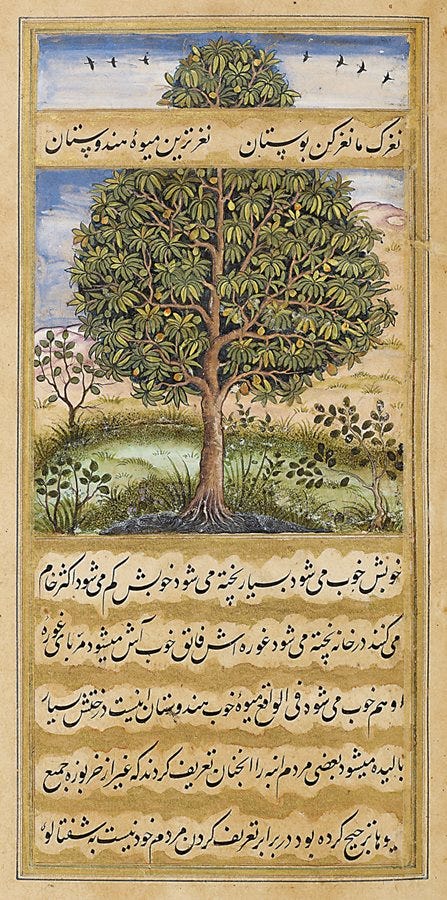To Know With the Entirety of Who We Are
My Approach to Knowledge: Intellectual and Experiential Ways of Knowing

There is a tree that my desk looks out on. While having my coffee this morning, I realised that I look at it every day before I write.
It’s an old mango tree. Must be over 50 feet tall. It has just dropped the last of its fruit after bursting with sticky fleshy treats that I and the parakeet parrots alike have been feasting on for weeks. And in the night, fruit bats the size of hawks would come to it to banquet in the dark.
At dawn my partner and I were often woken by the loud thud of a ripe mango falling, or the excited shrieks of the usual parrot flock squabbling over them for breakfast.
As I look at it now, it is quiet. Bare. Its work done. Like the full moon waning after its ultimate stretch, or the fertile womb after shedding the last of its monthly wall. A bit raw. A bit tired. A new shape to acclimatise to.
Big work done but little evidence for it.
The stories say that when we go to the Underworld, we must return with something or no one will believe we were there.
Like Gilgamesh or Odysseus returning from metamorphic journeys with nothing physical to show for it, there is little evidence for this opulent tree’s labour aside from the shed flesh of a few mangos rotting at its feet (and perhaps my kitchen currently brimming with jars of dehydrated mango).
I live in a remote part of the Australian bush with my partner and our dog, and we live a bit of a hermit life. We don’t often see many people. And the main relationships I’ve formed since I arrived here last May is with this little patch of land.
Like my great-grandmother’s fig tree that this publication is named after, or the bees that I found myself writing an entire dissertation on and for whom 15,000 words were still not quite enough, it is this tree that, every morning, tells me most of what I need to know.
The human imagination works in images after all. And sometimes, should we be so lucky, we can hear the other-than-human world speaking, and giving language to the experiences of the soul that we might struggle to articulate.
And while the tree’s mysteries take place, and it blossoms and pollinates itself and bares fruit and retreats into stillness, I sit here and write.

I want to extend my gratitude again here to all my new paid subscribers (hat tipped toward you if that’s you!), this year I can make more time for it. For writing. And it feels like the greatest of gifts. I am for the first time heeding Rilke’s call, when he said, ‘Go now and do the heart-work on the images imprisoned within you.’
I’m finding my language for these images on these Sunday entries, and I have you (both free and paid subscribers) on the other side of these pages to thank for that.
I’ve received some very thoughtful emails in response to last week’s piece on Wisdom, and so thought I would expand on that topic from a bit more of a personal lens this Sunday.
I don’t often write personal pieces. In the narcissism of modern society I prefer to write essays and poetry. But I recognise sometimes it’s important to have more of a sense of the creature that sits behind the words!
So I thought I would share a little bit this Sunday about the things that shaped my thinking, and how I came to write about the topics that make up this publication.
Keep reading with a 7-day free trial
Subscribe to Under a Fig Tree to keep reading this post and get 7 days of free access to the full post archives.




